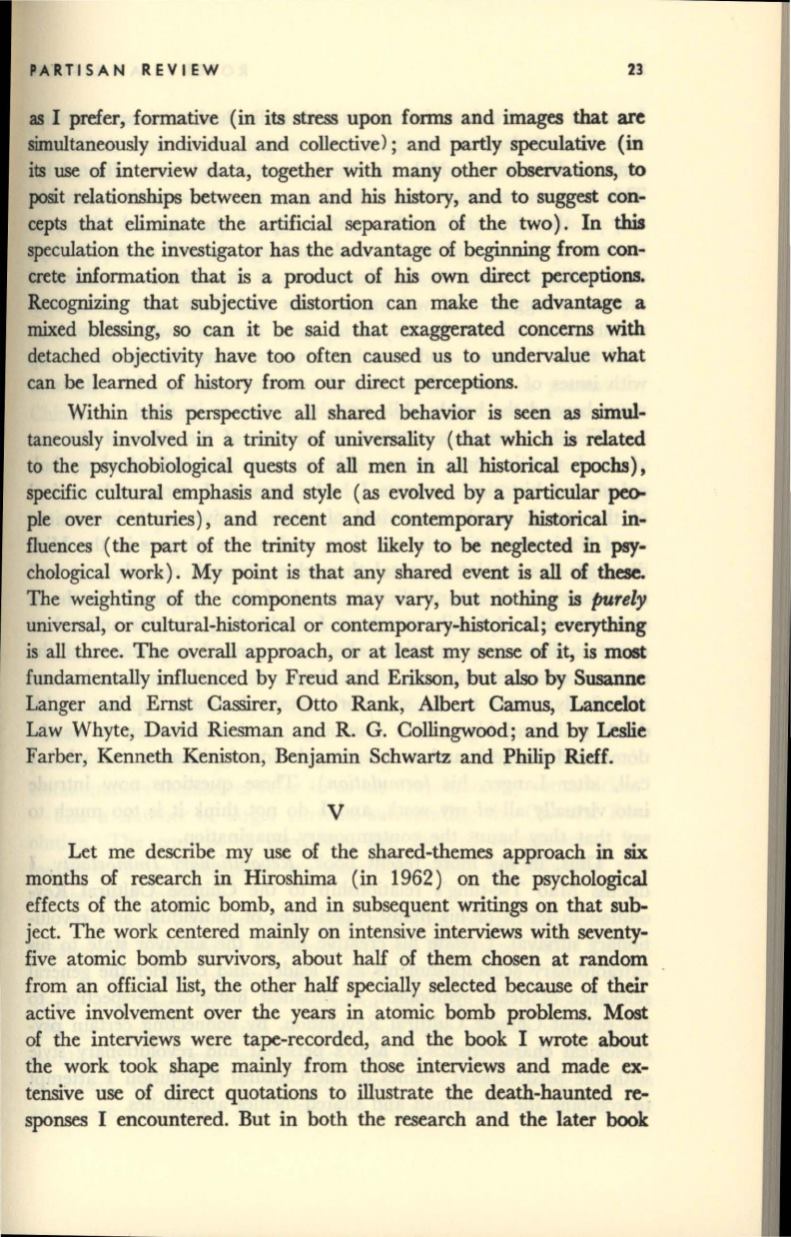
PARTISAN REVIEW
23
as
I prefer, formative (in its stress upon fonns and images that are
simultaneously individual and collective); and partly speculative (in
its use of interview data, together with many other observations, to
posit
relationships between man and his history, and to suggest con–
cepts that eliminate the artificial separation of the two). In
this
speculation the investigator has the advantage of beginning from con–
crete information that is a product of his own direct perceptions.
Recognizing that subjective distortion can make the advantage a
mixed blessing, so can it be said that exaggerated concerns with
detached objectivity have too often caused us to undervalue what
can
be
learned of history from our direct perceptions.
Within this perspective all shared behavior is seen as simul–
taneously involved
in
a trinity of universality (that which is related
to the psychobiological quests of all men in all historical epochs),
specific cultural emphasis and style (as evolved by a particular peo–
ple over centuries), and recent and contemporary historical in–
fluences (the part of the trinity most likely to be neglected in
psy–
chological work). My point is that any shared event is
all
of these.
The weighting of the components may vary, but nothing is
purely
universal, or cultural-historical or contemporary-historical; everything
is all three. The overall approach, or at least my sense of it, is most
fundamentally influenced by Freud and Erikson, but
also
by Susanne
Langer and Ernst Cassirer, Otto Rank, Albert Camus, Lance10t
Law Whyte, David Riesman and R. G. Collingwood; and by Leslie
Farber, Kenneth Keniston, Benjamin Schwartz and Philip
Rieff.
v
Let me describe my use of the shared-themes approach in
six
months of research in Hiroshima (in 1962) on the psychological
effects of the atomic bomb, and in subsequent writings on that sub–
ject. The work centered mainly on intensive interviews with seventy–
five atomic bomb survivors, about half of them chosen at random
from an official
list,
the other half specially selected because of their
active involvement over the years in atomic bomb problems. Most
of the interviews were tape-recorded, and the book I wrote about
the work took shape mainly from those interviews and made ex–
tensive use of direct quotations to illustrate the death-haunted re–
sponses I encountered. But in both the research and the later book


